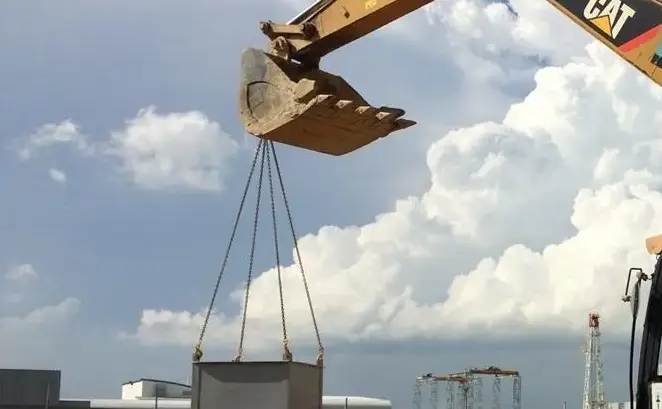No products in the basket.

Across construction sites, excavators and telehandlers are increasingly used for lifting and placing materials — from rebar cages and manholes to site cabins and tanks. While this flexibility supports productivity, many employers don’t realise these activities are classed as lifting operations under LOLER (Lifting Operations and Lifting Equipment Regulations 1998).
This means additional competency, planning, and supervision duties apply — and using these machines without the correct training or endorsements could leave your business exposed to enforcement action or serious incidents.
Ask yourself:
If yes: your operators are carrying out lifting operations and must hold the relevant Lifting Operations endorsement.
Training and Competency Route:
Similarly, telehandlers are often used for much more than standard fork work.
Ask:
If yes: they are performing suspended load operations and should be qualified in the appropriate lifting category.
Training and Competency Route:
Under LOLER, lifting operations must be planned, supervised, and carried out safely. If your business uses excavators or telehandlers for lifting, you should also consider the wider team and their competence:
| Role | Responsibility | Typical Training |
|---|---|---|
| Appointed Person (Lifting Operations) | Plans and oversees all lifting activities | CPCS A61 / NPORS N401 Appointed Person |
| Crane / Lift Supervisor | Implements lift plan and ensures operations are safe on the day | CPCS A62 / NPORS N405 Lift Supervisor |
| Slinger / Signaller | Attaches loads, selects lifting accessories and directs the operator | CPCS A40 / NPORSN402 Slinger/Signaller |
Even if lifts are carried out with a telehandler or excavator — the same principles apply as with a crane. Each role is critical to ensure stability, communication, and safety.
Why It Matters
Failing to recognise these as lifting operations can lead to:
With incidents involving lifting equipment often resulting in serious injuries or fatalities, compliance isn’t just a paperwork exercise — it’s about protecting lives.
Workforce Skills Support offers:
Our experts can help you identify where lifting operations are taking place — even if unintentionally — and put the right training, procedures, and records in place to stay compliant.
Yes — lifting suspended loads counts as a lifting operation under LOLER. Extra planning, supervision, and training are required.
If it lifts or moves loads with chains, slings, hooks, or places materials like pipes, manholes, or site cabins — it’s a lifting operation.
NPORS: N100 – Excavator as a Crane
CPCS: A59 – Excavator 360° Endorsement E
NPORS / CPCS Telehandler – Excavator 360 – various
NVQ: R/508/6482 – Operating Excavator Cranes
If it lifts suspended loads (not on forks) or uses slings, hooks, jibs, or other attachments — it counts as a lifting operation.
NPORS: N138 – Suspended Loads (Telehandler)
CPCS: A17 – Telescopic Handler Endorsement E
NPORS / CPCS Telehandler – Excavator 360 – various
Appointed Person – CPCS A61 / NPORS N401 / Level 5 Controlling Lifting Operations (Planning Lifts) – Diploma Units 210, 529, 530, 702, 728, 729 and 732
Lift Supervisor – CPCS A62 / NPORS N405 / Level 4 Controlling Lifting Operations (Supervising Lifts) – Diploma Units 210, 531, 700, 703, 705, 708, 711 and 713
Slinger/Signaller – CPCS A40 / NPORS N402 / Level 2 Controlling Lifting Operations – Diploma QCF 01 or 641 plus 402B and 402C
Breach LOLER
Invalid insurance claims
HSE enforcement action
Higher risk of accidents
We offer testing, NVQs, and guidance for operators and lifting teams — ensuring safety and compliance.
If your excavators or telehandlers are doing more than moving soil or pallets, it’s time to review your lifting operations.
Being proactive now ensures your workforce remains safe, competent, and compliant — and your business protected under LOLER.